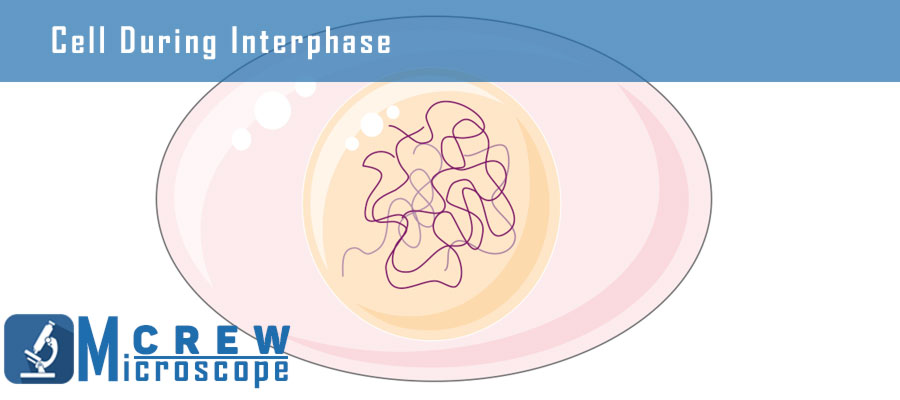DNA and chromosomes are critical to cell division and multiplication. They ensure that each daughter cell receives an equal amount of genetic material. Division either occurs through mitosis or meiosis according to the cell’s need. While you can observe the process under a compound microscope, some aspects may not be very clear. One common question regarding mitosis observation is, “Why is it difficult to observe individual chromosomes with a light microscope during interphase?”
This article tells you what interphase is and why it is difficult to see individual chromosomes during this part of the process.
What is Interphase in Cell Division?
Interphase is the step before the division of the cell starts. It is also known as the preparatory phase, ensuring all internal and external conditions are met before mitosis begins. It constitutes three phases: G1 phase, S phase, and G2 phase.
G1 Phase
The G1 phase comprises the accumulation of chromosomal DNA and proteins. It also collects the energy to replicate each chromosome in the nucleus.
S Phase
Chromosomal replication begins in the S phase, resulting in sister chromatids connected at the centromere. Centrosome duplication also occurs during the S phase, along with the formation of mitotic spindles.
G2 Phase
The G2 phase is the last step of interphase before cell division; the cell replenishes the energy required to divide the chromosomes into daughter cells. It is also the time of protein synthesis and organelle duplication. The cell might also exhibit growth during this phase.

Observing Individual Chromosomes with a Light Microscope during Interphase
As division does not begin in interphase, the chromosomes are in a relaxed state, also known as chromatin. They are uncoiled and do not have a distinct chromosomal structure. Thus, chromosomes are not visible under a light microscope during interphase. You can see the nucleolus, but the chromosomes appear as threads or fine dots. As prophase begins, the loosened strands condense again, producing highly structured chromosomes.
Type of Genetic Material in Interphase and Why is it Not Clearly Visible?
Genetic material is in the form of chromatin during interphase and not clearly visible. It is a mixture of DNA and the proteins that makeup chromosomes. Chromatin is the loose and less condensed form of the genetic material.
During Which Phase Do Chromosomes Become Visible under the Light Microscope?
While chromosomes become visible under the light microscope as prophase begins, they are not very distinct. Chromosomes are the most visible during metaphase. They condense and move together, aligning in the center of the dividing cell during metaphase.

The Bottom Line
Meiosis and mitosis are critical to cell division comprising various steps, including interphase, before cell division starts. If you want to see chromosomes during interphase, you will be disappointed. The cell does not have chromosomes during the interphase. If you wonder why it is difficult to observe individual chromosomes with a light microscope during interphase, it is because of the chromosome’s form.
The chromosomes loosen up and are in the form of chromatin during interphase. Thus, you cannot see tightly coiled chromosomes. Instead, they appear as loose threads with nucleoids. The chromosomes attain their distinct structure as prophase begins.
FAQs
Are chromosomes not visible during interphase?
Chromosomes are visible during interphase but not in the form of properly structured chromosomes. They appear as threads with nucleoids instead of their usual structure. This appearance in the living interphase nucleus is reversible under specific conditions.
Can chromosomes be seen with a light microscope?
Yes, you can see chromosomes under a light microscope. They are most clearly visible during metaphase and appear thread-like during the resting or preparatory phase.
What event does not occur during interphase?
Interphase is the preparatory phase, and the event that does not occur during interphase is cell division. This stage of the process only contributes to attaining energy for division.


Leave a Reply